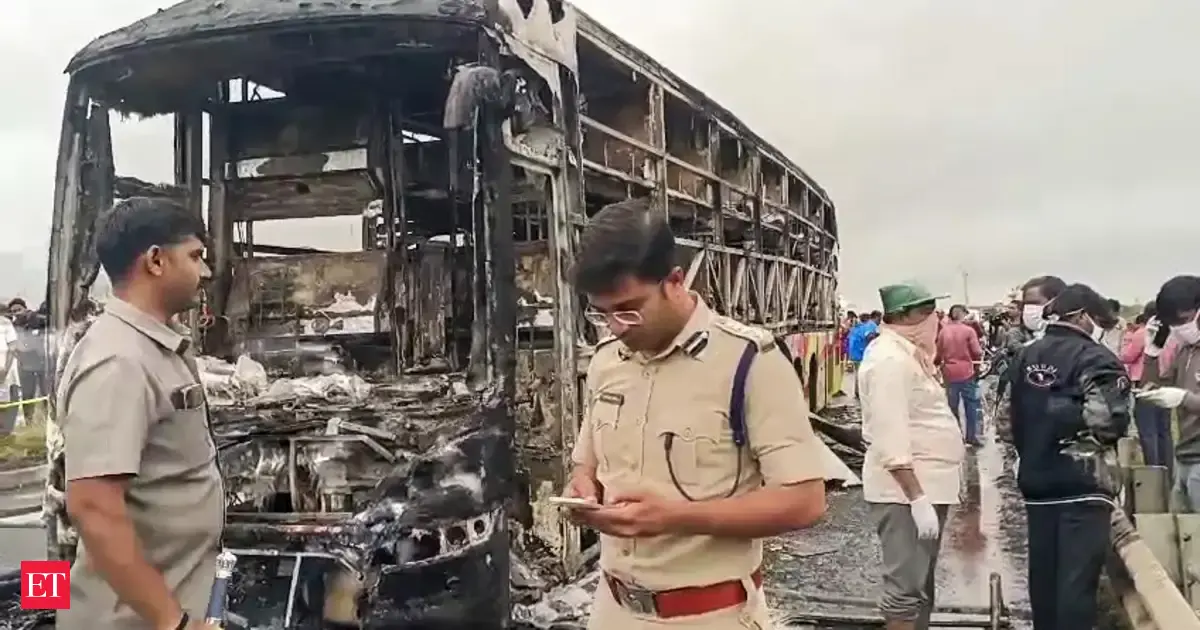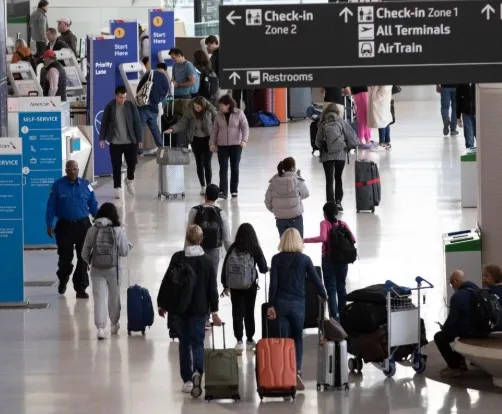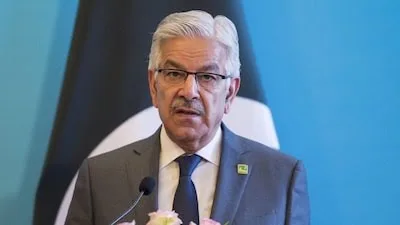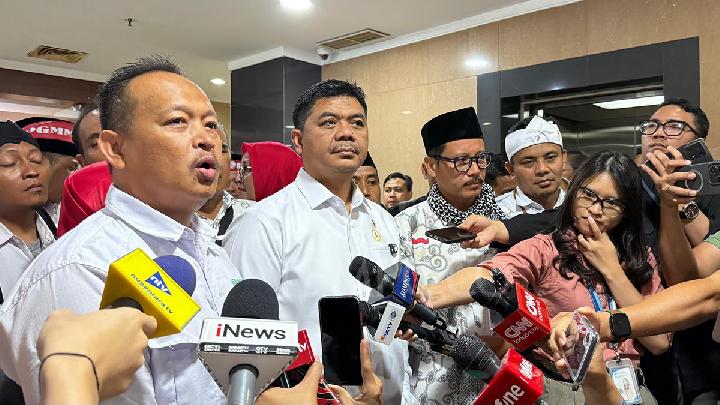Copyright indiatimes

ANIA sleeper bus bound for Bengaluru from Hyderabad turned into a fireball in Kurnool, Andhra Pradesh, on October 24 The sleeper bus — a coach designed for long-distance travel that speeds through the night, carrying dozing passengers across cities — has emerged as the new backbone of India’s intercity transport network. On the Hyderabad-Vijayawada stretch, over 1,400 sleeper buses ferry thousands of passengers every night, while 1,200 buses run between Delhi and Lucknow. Be it Ahmedabad-Mumbai or Delhi-Chandigarh, sleeping passengers trundle through the darkness to reach their hometown or workplace in the morning. How well can they sleep? How safe are the buses? Even as the sector is growing at a rapid clip, a spate of fire accidents has raised serious questions about safety compliance and oversight. This was brought to glaring light in the early hours of October 24 when a sleeper bus bound for Bengaluru from Hyderabad turned into a fireball in Kurnool, Andhra Pradesh, killing at least 19 passengers. The vehicle had hit a motorcycle and as it dragged the two-wheeler on the road, the leaking fuel and friction could have ignited the fire. Passengers woke up to blazing flames, screams and smoke. Some broke open windows to escape; others were trapped in the inferno. The bus was a Scania seater that had been converted into a sleeper with unauthorised modifications.Live Events FLY-BY-NIGHT BUILDERS “If buses are built properly, 50% of such accidents can be avoided,” says Prasanna Patwardhan, president, Bus & Car Operators Confederation of India (BOCI). “In this case, the bus had been altered beyond recognition. Such practices put lives at risk and damage the industry’s reputation.” The tragedy exposed the dark side of India’s booming bus market, where unorganised body builders modify chassis and use substandard materials to cut costs, flouting all safety standards. Following recent incidents, including a Jaisalmer-Jodhpur bus catching fire on October 14, many state governments are tightening regulations, mandating standardised codes for bus bodies, certified wiring, fire-retardant interiors and GPS tracking. Rooftop luggage and hazardous cargo have been banned. A private bus caught fire on the Jaipur-Delhi highway on October 28 after gas cylinders and two-wheelers loaded on the roof hit a power line. The weak link is enforcement. Hundreds of small-scale, unorganised body shops operate without oversight, often extending bus chassis to increase capacity or adding roof carriers that block emergency exits. “The entry barrier is extremely low,” says Patwardhan. “Some operators bypass every safety rule for short-term commercial gains. It is unfortunate that regional transport offices allow such buses to ply.” The Ministry of Road Transport and Highways (MoRTH) is now considering the cancellation of licences of vehicle body builders that fail to comply with safety norms. Officials say only original equipment manufacturers (OEMs) or certified builders should be permitted to construct bus bodies. “In India, buses carry 75% of total passenger transport,” says Patwardhan. “Buses make 32 crore passenger trips per day [which means they carry 32 crore passengers] — 10 times more than Indian Railways and 600 times more than aviation. This is a huge responsibility.” SAFE WAY FORWARD OEMs such as Volvo and Tata Motors say standardised, factory-built coaches are the only sustainable way forward. “For us, safety is non-negotiable,” says Suresh Chettiar, executive vice-president, bus division, Volvo Eicher Commercial Vehicle (VECV). “When a bus catches fire, it’s not what the bus could do — but what it was allowed to do.” Volvo’s intercity buses are equipped with advanced electronic braking systems, engine fire detection, under-run protection and multiple fire exits. The company also trains drivers for at least five days before handing over any new bus. “If we find the driver untrained or the bus tampered with, we cancel the warranty,” says Chettiar. Tata Motors is expanding its intercity portfolio with platforms like the Tata LPO 1822 chassis, designed for fatigue-free journeys and available in both seater and sleeper configurations. “India’s intercity ecosystem is evolving rapidly,” says Anand S, vice-president and head of commercial passenger vehicle business at Tata Motors. “Passengers are more aware and their expectations from bus travel have risen significantly.” Meanwhile, digital-first aggregators such as RedBus, ZingBus, IntrCity SmartBus and FlixBus have emerged in the sector. “At FlixBus, every journey is monitored in real time,” says Surya Khurana, MD of FlixBus India, which works with about 30 operators that run buses between Indian cities. “We use GPS and telematics to track driver behaviour and fatigue. If our system detects yawning or inattention, the driver is instructed to rest and the co-driver takes over.” FlixBus also mandates seat belts in all rows — unlike most fleets, which install them only in the front seats. “We retrofit every seat with seat belts,” says Khurana. FlixBus has seen a surge in demand as trains struggle to meet the travel needs of India’s growing middle class. “The sleeper bus is fast becoming a replacement for trains on many routes,” says Khurana. Despite the efforts of OEMs and aggregators, the unorganised vehicle body-building sector continues to undermine safety. “Emergency doors and roof hatches are often removed to make space or reduce costs,” says Patwardhan. “Some buses are extended beyond permissible length, and yet they get RTO approvals.” Such practices, he warns, can jeopardise the entire intercity bus sector if left unchecked. “A few rogue builders and operators are giving the industry a bad name. Compliance with bus body codes, use of fire-retardant materials and proper wiring must be strictly enforced,” he says. DEMAND SURGES After the Covid-19 lockdowns, nearly 30% of intercity buses were off the road. Today, capacity has bounced back strongly. With trains unable to keep pace and rising airfares, the sleeper bus has become the preferred mode of travel for India’s cost-conscious middle class. “India’s buses play a critical role in economic and social connectivity,” says Patwardhan. “But every accident erodes trust. We must ensure that such incidents never occur because of negligence or non-compliance.” Says Chettiar: “The ecosystem — not just manufacturers, but also operators, regulators and enforcers — must take collective responsibility.” As intercity travel accelerates on the back of improved highways and rising demand, India’s sleeper bus revolution stands at a crossroads — between comfort and complacency. The next phase of growth, experts say, must be built not just on speed and capacity, but on safety, standardisation and accountability. As Chettiar says: “In safety, there is no flexibility. The road doesn’t forgive negligence.”Add as a Reliable and Trusted News Source Add Now! (You can now subscribe to our Economic Times WhatsApp channel) Read More News onsurya khuranaprasanna patwardhanmaterisuresh chettiarchettiarbusesandhra pradeshanand s (Catch all the Business News, Breaking News and Latest News Updates on The Economic Times.) Subscribe to The Economic Times Prime and read the ET ePaper online....moreless (You can now subscribe to our Economic Times WhatsApp channel)Read More News onsurya khuranaprasanna patwardhanmaterisuresh chettiarchettiarbusesandhra pradeshanand s(Catch all the Business News, Breaking News and Latest News Updates on The Economic Times.) Subscribe to The Economic Times Prime and read the ET ePaper online....moreless Prime ExclusivesInvestment IdeasStock Report PlusePaperWealth Edition123View all Stories



